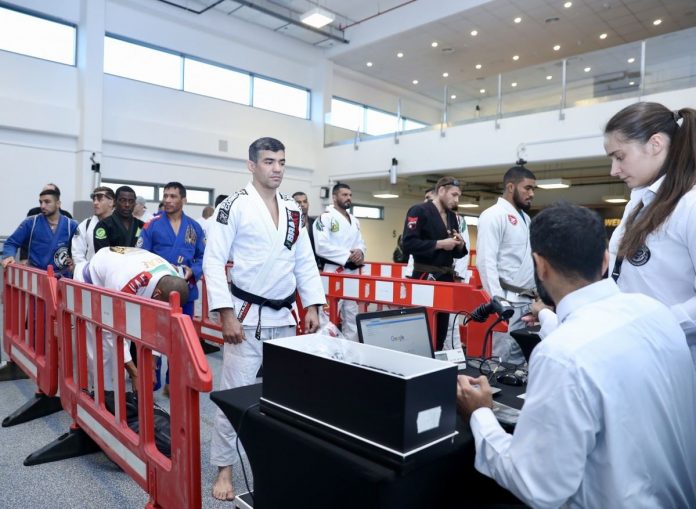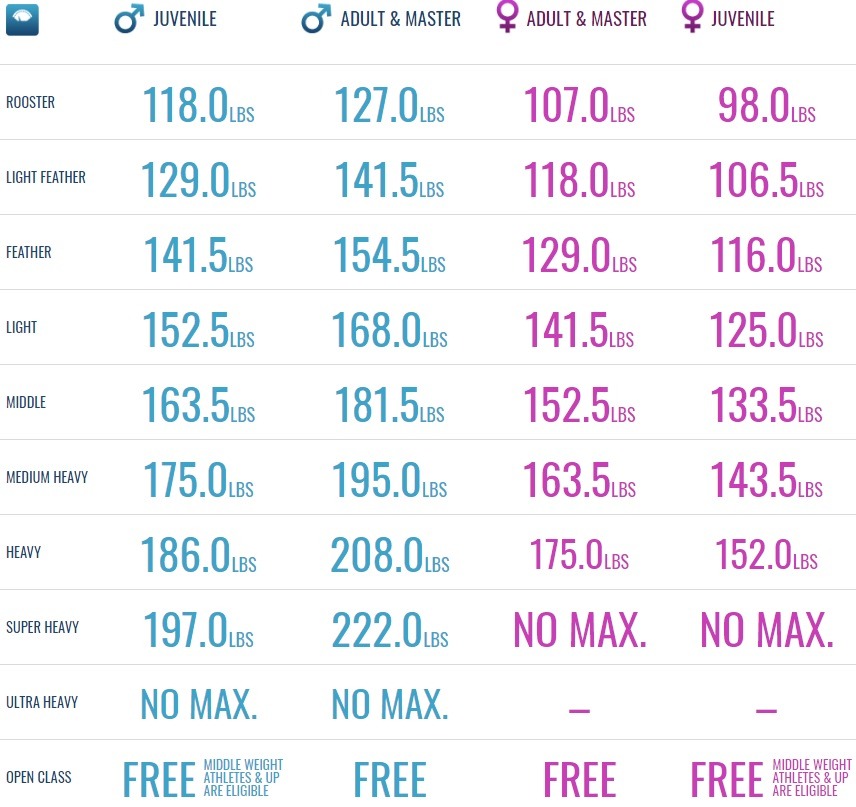
The one thing that is a major source of controversy in the world of martial arts is weight cutting. All things aside, it usually presents a clear hazard to an athlete’s health. This is particularly the case with multiple successive weight cuts, which is not uncommon for grapplers. Wrestlers usually cut every weekend during the season. Brazilian Jiu-Jitsu athletes might get a couple of weeks in between, but that only makes the problem worse. The real question is, with so many BJJ weight classes available, is cutting down an extra 10 lbs really that important? Truth be told, it seems completely redundant for people that intend to compete in the absolute anyway. So, should major BJJ organizations change the way they approach weigh-ins or should grapplers stick to more natural weight classes?
The issue of weight cutting is sold as weight class-based sports. The methods people employ are so wide off the mark that they usually stress the body way beyond its limits. And the worst thing is, this is not just a one-time thing. Cutting weight and all the misery associated with it is taken for granted. Luckily, in BJJ there haven’t been deadly consequences so far, but that’s not the case with MMA. This is a clear testament to the issue of weight cutting, which is in essence, based on the existence of BJJ weight classes.
In all honesty, do you think a few pounds more or less are really going to affect you in the blue belt masters division at the local IBJJF tournament? Even with millions of dollars on the line in MMA that practice is stupid and outdated. When you have no financial or similar gain whatsoever, do you really think risking your health is worth you being 100 grams heavier than your opponent?
BJJ Weight Classes
In Brazilian Jiu-Jitsu, there’s anything but a lack of weight classes. So far, there are 9 weight classes that range from 127lbs (male) and 102lbs (female) all the way to unrestricted weight above 222lbs (male) or 175lbs (female). That is quite the range of weight classes, which, as easily seen, are not that much far apart.

Fitting within a BJJ weight class is not hard. Tailor a sustainable nutrition plan first. See if you can stick to it for a few months. By then, you’ll get the most of it. If you’re comfortable staying at that weight (+/-5lbs) during your life then choose the weight class where you fit without any cutting. Obviously, if a pound is a difference you can consider holding the carbs a couple of days before a competition. But otherwise, trying to get three BJJ weight classes lower in order to have a physical advantage is just a hoax. Read on and you’ll understand why.
Cutting Weight For BJJ
So far, most weight-cutting methods employed by both amateurs and professional grapplers are dangerous, to say the least. The method of choice for most is dehydration, often extreme, in order to reduce water weight. Doing burpees in a sauna is exceedingly uncomfortable – and for a reason. Our body is not designed to kick-start weight loss ta such a steep rate in so little time. Since it’s holding on to everything it can for dear life, water is usually the easiest thing to get rid of. However, doing anything, physical or mental, in a dehydrated state is next to impossible.
One really important thing to consider about BJJ weight classes is the weight of the Gi. For those competing in Gi events, expect a weight of 3-5 lbs on top of your own body weight. This depends a lot on the type of Gi as well as its size. The larger the Gi, the more it weighs. However, after a grueling weight cut, ending up DQed because you didn’t factor in Gi weight is about as useless a risk to your health as it can get.
The one thing that can help you is careful and structured weight manipulation. You need to take your weight down to the level where you can do two things with it. The first is to retain it for extended periods of time with ease. The second is to have the energy to perform at a high pace and level, against another well-trained grappler.
The Weigh-In Debate
In truth, the blame for extreme weight cutting is not only down to the athletes. While introducing more BJ weight classes doesn’t seem logical, doing something about the weigh-in is pretty straightforward. Most organizations around the world, tend to have the grapplers weigh in right before their first match. In an ideal world with no weight cuts, this seems like the best thing to do to keep things fair.

The UAJJF and other invitational tournaments like EBI have already adopted this practice. it is working for them, and it should be something every other promotion or organization out there considers. After all, the health of the athletes should come first, and both the athlete and the organization should do whatever they can to ensure that.
Benefits Of Drinking Coffee And Green Tea For Jiu-Jitsu Training
Rope Jumping Progressions For Brazilian Jiu-Jitsu Conditioning


![Darce Choke Encyclopedia – Origins, Mechanics and Variations [2024] BJJ, choke, Brabo, BJJ Darce Choke, D'arce Choke, Darce BJJ Choke](https://bjj-world.com/wp-content/uploads/2017/11/JungPoirierLeeYahoo-218x150.jpg)








![Front Headlock and Turtle Escapes Brian Glick DVD Review [2024] Front Headlock and Turtle Escapes Brian Glick DVD Review](https://bjj-world.com/wp-content/uploads/2024/11/headlock-and-turtle-escapes-brian-glick-dvd-review-218x150.png)
![Basic Closed Guard Jasmine Rocha DVD Review [2024] Basic Closed Guard Jasmine Rocha DVD Review](https://bjj-world.com/wp-content/uploads/2024/11/basic-closed-guard-jasmine-rocha-dvd-review-218x150.png)
![Don’t Stand Up Chris Wojcik DVD Review [2024] Don't Stand Up Chris Wojcik DVD Review](https://bjj-world.com/wp-content/uploads/2024/11/dont-stand-up-chris-wojcik-dvd-review-218x150.png)
![EMU Guard 2.0 Benjamin Power DVD Review [2024] EMU Guard 2.0 Benjamin Power DVD Review](https://bjj-world.com/wp-content/uploads/2024/11/emu-guard-2-0-benjamin-power-dvd-review-218x150.png)
![The Whole Omoplata Enchilada Lyanne Perez DVD Review [2024] The Whole Omoplata Enchilada Lyanne Perez DVD Review](https://bjj-world.com/wp-content/uploads/2024/11/whole-omoplata-enchilada-lyanne-perez-dvd-review-218x150.png)
![No-Gi Defense Xande Ribeiro DVD Review [2024] No-Gi Defense Xande Ribeiro DVD Review](https://bjj-world.com/wp-content/uploads/2024/11/no-gi-defense-xande-ribeiro-dvd-review-218x150.png)








![Two Sides One Game Sweep and Pass Marcos Tinoco DVD Review [2024] Two Sides One Game Sweep and Pass Marcos Tinoco DVD Review](https://bjj-world.com/wp-content/uploads/2024/11/sweep-and-pass-marcos-tinoco-dvd-review-100x70.png)

![Just Pass Jay Rodriguez DVD Review [2024] Just Pass Jay Rodriguez DVD Review](https://bjj-world.com/wp-content/uploads/2024/11/just-pass-jay-rodriguez-dvd-review-100x70.png)
![Charles Allan Price Building Workouts For BJJ DVD Review [2024] Charles Allan Price Building Workouts For BJJ DVD Review](https://bjj-world.com/wp-content/uploads/2024/09/charles-allan-price-building-workouts-for-bjj-review-100x70.png)


![Neil Melanson DVD Bundle Review: Filthy Brutal No Good Attacks [2024] Neil Melanson DVD Bundle Review: Filthy Brutal No Good Attacks](https://bjj-world.com/wp-content/uploads/2024/10/neil-melanson-dvd-bundle-review-filthy-attacks-100x70.png)

![Countering Triangles And Omoplatas Adam Mazin DVD Review [2024] Countering Triangles And Omoplatas Adam Mazin DVD Review](https://bjj-world.com/wp-content/uploads/2024/10/countering-triangles-and-omoplatas-adam-mazin-dvd-REVIEW-100x70.png)
![Reverse De La Riva System Mikey Musumeci DVD Review [2024] Reverse De La Riva System Mikey Musumeci DVD Review](https://bjj-world.com/wp-content/uploads/2024/11/reverse-de-la-riva-system-mikey-musumeci-dvd-review-100x70.png)


![Kill The Underhook Dima Murovanni DVD Review [2024] Kill The Underhook Dima Murovanni DVD Review](https://bjj-world.com/wp-content/uploads/2024/10/kill-the-underhook-dima-murovanni-dvd-review-100x70.png)



![Modern Split Squat Passing Jason Rau DVD Review [2024] Modern Split Squat Passing Jason Rau DVD Review](https://bjj-world.com/wp-content/uploads/2024/11/modern-split-squat-passing-jason-rau-dvd-review-100x70.png)
![BJJ Foundations Mikey Musumeci DVD Bundle Review [2024] BJJ Foundations Mikey Musumeci DVD Bundle Review](https://bjj-world.com/wp-content/uploads/2024/09/bjj-foundations-mikey-musumeci-dvd-bundle-review-100x70.png)

![Mastering Takedown Prevention Steve Mocco DVD Review [2024] Mastering Takedown Prevention Steve Mocco DVD Review](https://bjj-world.com/wp-content/uploads/2024/11/mastering-takedown-prevention-steve-mocco-dvd-review-100x70.png)